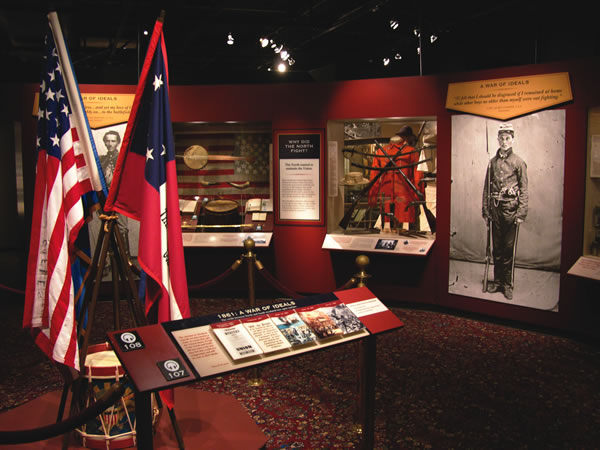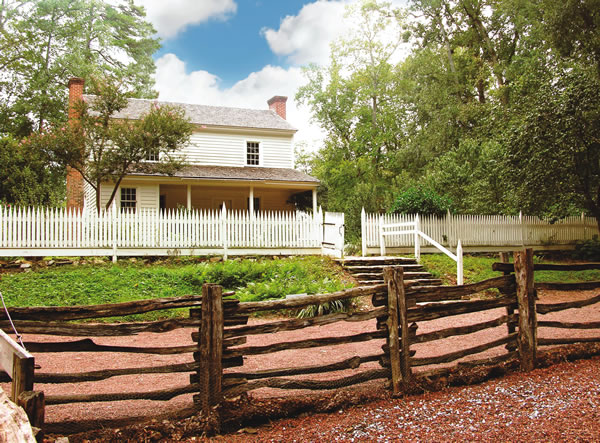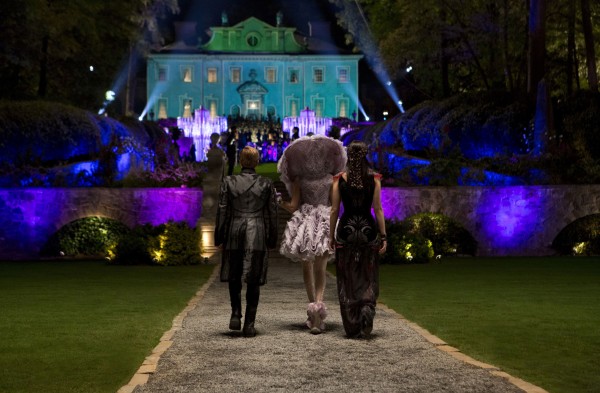The Atlanta History Center
Located on 33 acres in historic Buckhead, the Atlanta History Center is preserving the city’s deep past through numerous collections, exhibits and three famous houses.- By Kristin Devoto
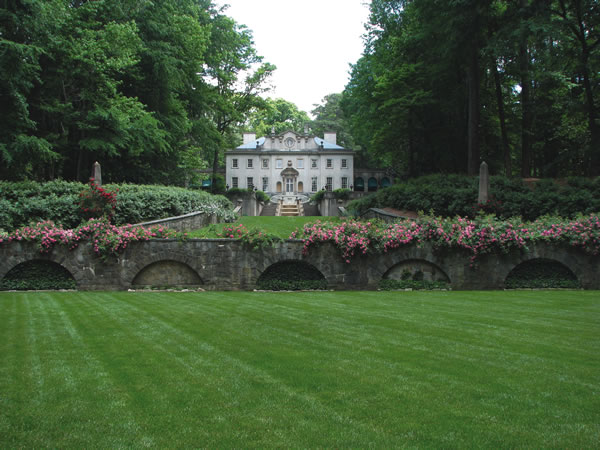 Though The St. Regis Atlanta is nestled within one of the most well-known and cosmopolitan enclaves of the city, it’s possible for guests to take a walk out of 21st century luxury and into the past. Less than half a mile from the St. Regis, the Atlanta History Center sits on a 33-acre campus, boasting three historic homes, six historic gardens and the Atlanta History Museum.“With all the exhibitions both permanent and traveling, the gardens and houses, we are unique in that we’re a one-stop shop for anyone with any interest in history,” says Hillary Hardwick, the center’s vice president of marketing communications.
Though The St. Regis Atlanta is nestled within one of the most well-known and cosmopolitan enclaves of the city, it’s possible for guests to take a walk out of 21st century luxury and into the past. Less than half a mile from the St. Regis, the Atlanta History Center sits on a 33-acre campus, boasting three historic homes, six historic gardens and the Atlanta History Museum.“With all the exhibitions both permanent and traveling, the gardens and houses, we are unique in that we’re a one-stop shop for anyone with any interest in history,” says Hillary Hardwick, the center’s vice president of marketing communications.
The Atlanta History Center was founded in 1926 by a group of 14 Atlantans. “They saw the changes that were happening and wanted to preserve the history of the city,” Hardwick explains. “They started small and collected personal materials and documents, and met in someone’s house.”
Though much has changed in the past 86 years, the mission of the center today isn’t all that different than it was during its founding. “Our mission is to connect people through history,” Hardwick says. “The platforms we use and the way we tell the story of the past have changed. Today the social history of the people who actually lived here is shown through the Swan House and Tullie Smith Farm and the gardens.”
Both the Swan House, a 1928 Philip Trammell Shutze-designed mansion that was home to the Edward Inman family of cotton heirs, and the Tullie Smith Farm, an 1840s plantation house originally home to the Robert Smith family, allow visitors to walk through history. Meticulously researched and kept as they would have been in their heydays, each historic home on the campus brings guests into the lives a cotton heir or plantation farmer would have lived. Visitors literally walk in the original families’ footsteps during a guided tour, as they learn more about the families’ lifestyles.
“I love the history center,” says The St. Regis Atlanta concierge Louis Wood. “It’s just two blocks from our resort but within a very exclusive residential neighborhood. It exists where it does because the Inman family gave the land and house to the historical society. We’re very lucky to have it within such a short walk. I often recommend it because it’s close and such a great facility.”
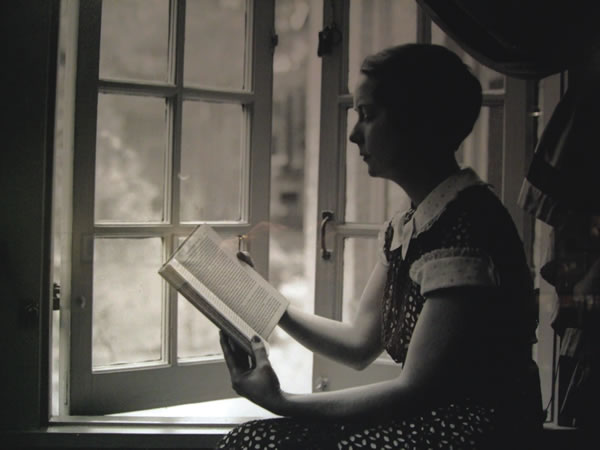 The Smith Family Farm was originally located east of Atlanta and survived Civil War destruction. In the 1970s, the house was relocated to the Atlanta History Center Campus, where it has since been run as a working farm. Its grounds now include a dairy, blacksmith shop, smokehouse, double corncrib, former slave cabin and barn as well as traditional vegetable, herb, field, flower and gardens. Both it and the Swan House are listed on the National Register of Historic Places.
The Smith Family Farm was originally located east of Atlanta and survived Civil War destruction. In the 1970s, the house was relocated to the Atlanta History Center Campus, where it has since been run as a working farm. Its grounds now include a dairy, blacksmith shop, smokehouse, double corncrib, former slave cabin and barn as well as traditional vegetable, herb, field, flower and gardens. Both it and the Swan House are listed on the National Register of Historic Places.
At the Swan House, visitors learn about daily life in the 1930s, including the empowerment of women during that decade. Though it wasn’t typical, Emily Inman actually received an education in finance, and Lizzie McDuffie, an Atlanta native who worked for the Inman family, later ended up working in the White House as a trusted source of President Franklin D. Roosevelt.
Through stories, personal photographs and intriguing objects, guests also come to know Edward Inman and his chauffeur, Grant Carter, who enjoyed the sport of racing, when that meant Inman driving and Carter pumping oil in the engine to maintain their racing speed. A variety of their racing trophies are on display. All of the stories come together to give visitors a better idea of what life was like during this time in Atlanta’s history.
The third historic home of the Atlanta History Center, the Margaret Mitchell House, is located a short distance from the main campus, on Peachtree Street. The Margaret Mitchell House features guided tours of the apartment, where Margaret Mitchell wrote “Gone With the Wind,” two exhibitions and a gift shop.
“The Swan House is the most popular of the three,” Hardwick says. “But Margaret Mitchell has an amazing international draw and the Smith Farm is popular with locals because of all the different events we hold there.”
Despite the draw of the historic homes, the Atlanta History Museum itself is one of the most popular destinations on the campus. One of the largest history museums in the country, it offers five permanent exhibitions and a variety of traveling exhibitions.
One permanent exhibition, “Metropolitan Frontiers,” offers “a walk through the history of Atlanta from its founding to the transportation rise to the Civil War through civil rights,” Hardwick says.
Another, “Turning Point,” is a Civil War exhibit that Hardwick describes as one of the top in the country, along with being one of the most popular exhibits at the museum. “It does a great job of presenting aspects that aren’t often considered,” she says.
Other permanent exhibitions at the museum include “Southern Folk Art and Traditions,” “Down the Fairway with Bobby Jones,” and the “Centennial Olympic Games Collection.”
“We definitely saw a surge in popularity during the Olympics at the Centennial Olympic Games Museum,” Hardwick says. “It’s interesting to come to the museum to see the transformation the city had to go through to host the international games.”
“We have a surprise factor here,” she explains. “People have an idea of how a history museum will be. We try to really surprise the visitors so they have fun. History should be fun.”
One of the ways the center accomplishes that is through interactive features. “Each exhibition has interactive features that interest people,” Hardwick says. “In ‘Turning Point,’ you can feel how heavy the soldiers’ equipment was. In the Centennial Museum, there’s a sports lab where people can compete on bikes and rowing boats. It’s like an indoor playground in some ways.”
One of the museum’s temporary displays, “War in Our Backyards,” has a unique, interactive feature that’s been drawing quite a bit of attention. “Visitors can pull up any spot in Atlanta and see exactly what happened on that spot in the Civil War,” Hardwick explains.
The center also offers a large variety of seasonal programs and lectures. This winter, visitors might want to take part in the very popular Holiday Spirit program on Dec. 20, where they’ll meet “ghosts” from past holidays at the Swan House and Smith Family Farm. The program will reveal how Atlantans celebrated the Christmas season during the 1860s and 1930s and teach visitors how and why some traditions we see today came to be.
The monthly lecture series covers all topics, from presidential history and gardens to social history and non-fiction adventures. Each lecture program joins authors and audiences in an intimate setting complete with author presentation, audience discussions and book signings. Past lectures featured best-selling authors, including David McCullough, Sara Gruen, Tom Brokaw, Gretchen Rubin, Nigella Lawson, Edmund Morris and Kevin Gillespie.
“The history center encompasses so many different aspects of the history of Atlanta,” Wood says. “They have the best collection of confederate memorabilia and a wonderful selection of Olympics history. It has something on Bobby Jones, the golfer. It has something for everyone.”
Hardwick agrees, and adds, “There really is always something new. We want to connect people to our community. It helps people understand what happens in cities and become good citizens. At the end of the day, we know everyone has a story to tell. We want to inspire visitors to talk to other people about their own history or what they learned here—that’s how we know we’re successful.”
All-inclusive general admission provides access to the Atlanta History Center, including the Atlanta History Museum, the Centennial Olympic Games Museum, the 1860 Smith Family Farm, the 1928 Swan House and 33 acres of gardens.
There’s much to uncover about Atlanta’s deep history in the South, and at the Atlanta History Center, visitors will surely feel connected to the strong culture that the city embodies through its exhibits, collections and historic houses.
Swan Coach House
The former carriage house of the famed 1928 Philip Trammell Shutze-designed Swan House is an institution in and of itself. Operated by the Forward Arts Foundation, Swan Coach House now offers a popular restaurant, art gallery and gift shop. The foundation uses profits from the Swan Coach House to support the visual arts in Atlanta, since Swan Coach House began operations in 1965.
Known throughout Atlanta as a place where women entertain, the Swan Coach House restaurant is often a site for celebrations.
“One of the really interesting parts of our history is that we haven’t changed much,” says manager Jason Horgan. “We’ve become somewhat of a touch point for multigenerational groups. A grandmother might bring her granddaughter in and tell her about coming for the first time with her own grandmother.”
Open only for lunch Monday through Saturday, guests are welcomed with a menu of Southern favorites, including soups, salads, sandwiches and entrees.
“It’s a nice opportunity to try lighter Southern fare,” Horgan explains. “We’re particularly known for our chicken salad. We call it ‘reliable Southern comfort food.’ ”
Though the menu always retains the classics, Horgan likes to offer a few seasonal items, like a chicken potpie and a heartier selection of soups in the winter. The most popular dish is the Swan’s Favorite: signature chicken salad served in delicate handmade timbales with their famous creamy frozen fruit salad.
The restaurant also offers prepared meals to-go. “These are generally variations of what’s on our menu,” Horgan explains. “Traditional Southern style food.”
The art gallery in Swan Coach House was established in 1985 and showcases a surprisingly diverse range of artwork.
“Our shows are very unique,” says gallery manager Karen Tauches. “Curator Marianne Lambert is an institution. She goes to emerging shows, contemporary shows and really knows the Atlanta area. She tries to find something that will bridge the gap between the tastes of our area and the work that’s really going on.”
This winter, the gallery staff is looking forward to a new exhibition, “Little Things Mean a Lot.”
All of the artwork is under eight inches, Tauches explains, as well as the gallery will feature more than 300 pieces of art by more than 100 artists.
Throughout the year, the gallery features both established and emerging artists with shows of all mediums. Annually, the Forward Arts Foundation rewards one emerging artist with a feature show and a grant enabling them to continue creating while living in Atlanta.
With the restaurant, gallery and gift shop, it’s clear that, in its second life, the former carriage house is now a much greater source of pride and history for its community than it ever could have been before.
More information about the gallery and restaurant at Swan Coach House can be found at swancoachhouse.com.

